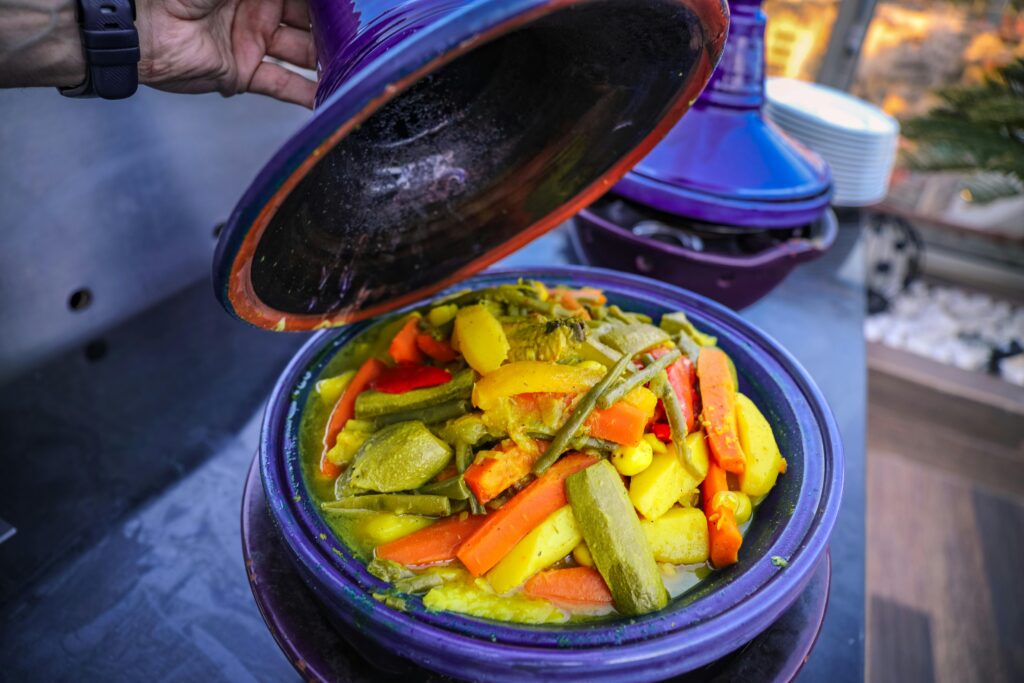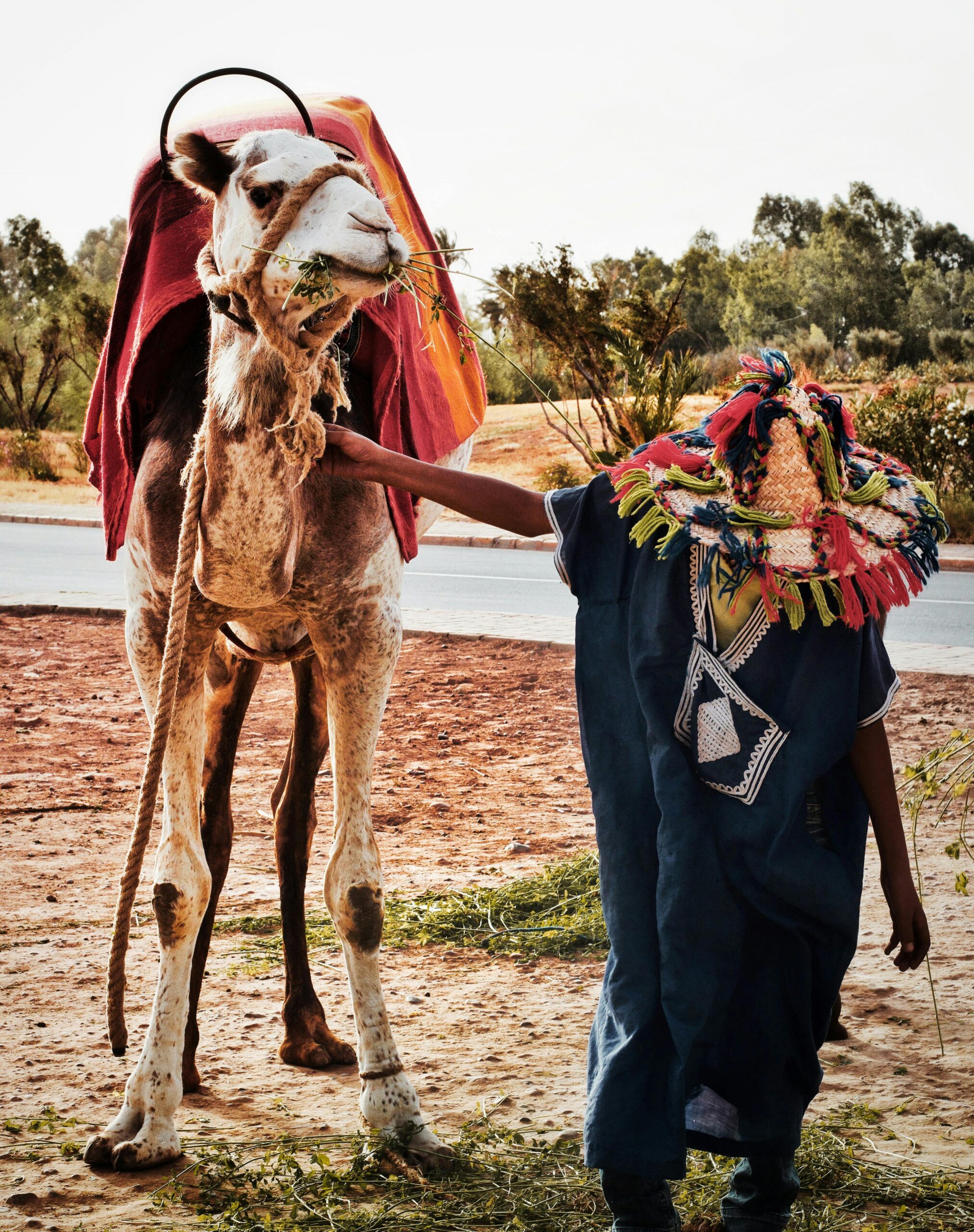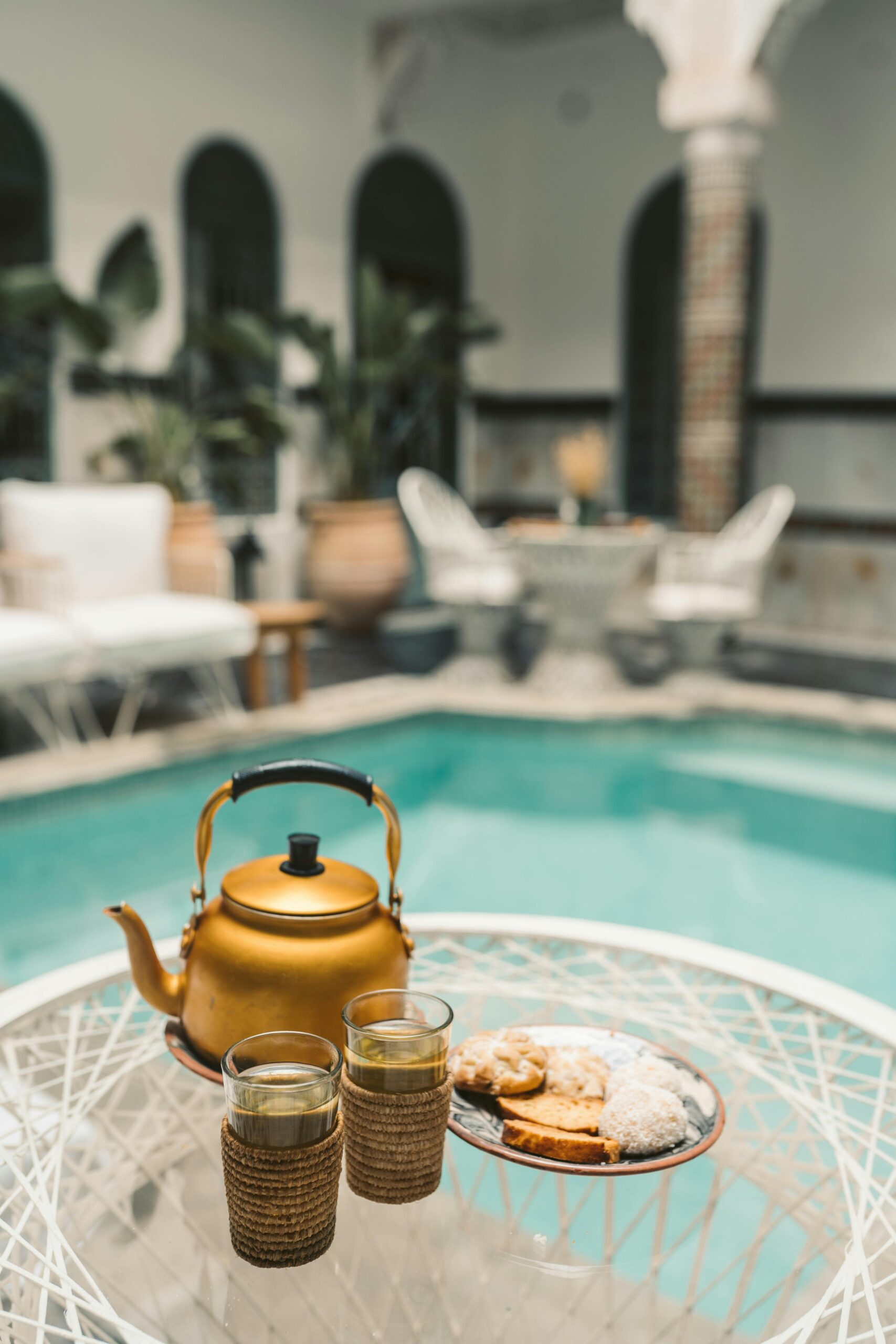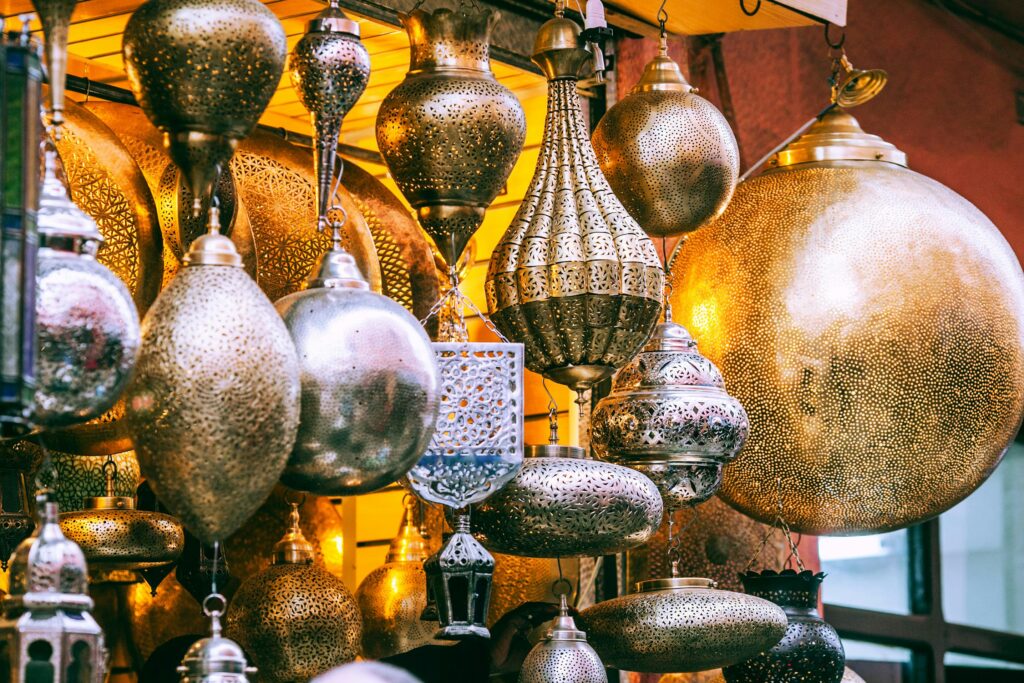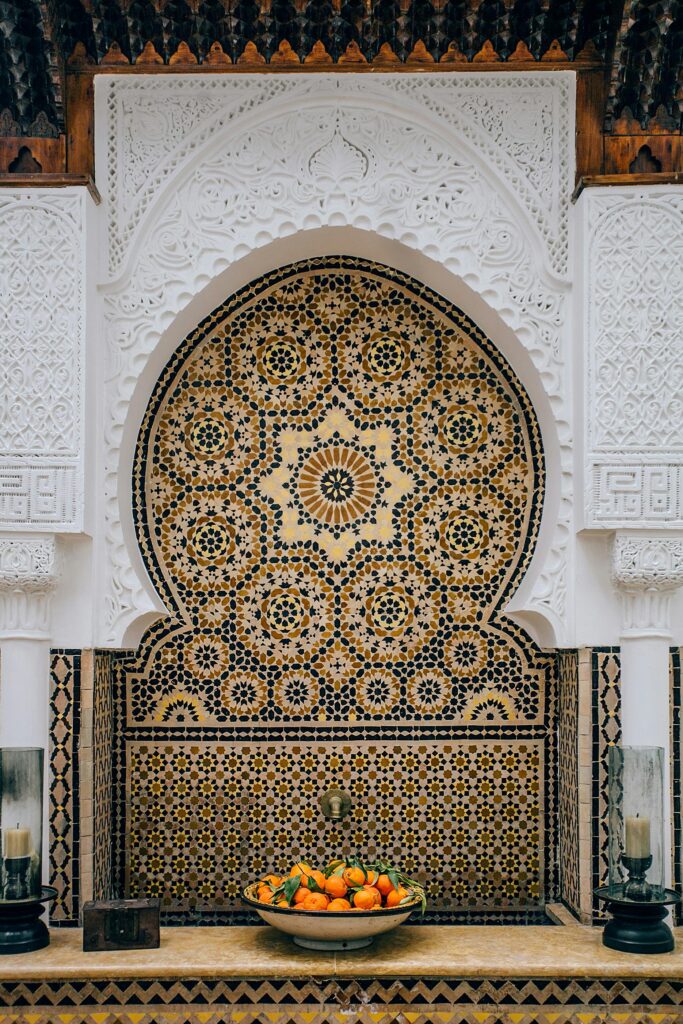Explore Morocco
Vibrant Cultural Heritage
The Imperial Cities
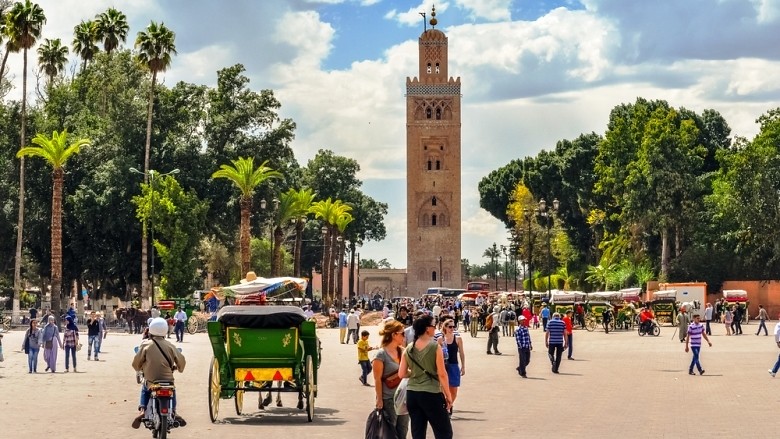
Marrakech, a vibrant and historic city in Morocco, is one of the country’s most iconic destinations. Known as the “Red City” due to the reddish hue of its buildings, it is a place where history and modernity coexist in harmony. The city is famous for its bustling medina, a maze of narrow streets lined with colorful markets, or souks, where merchants sell everything from spices to textiles and handmade crafts. At the heart of the city lies Jemaa el-Fnaa, a lively square filled with street performers, food vendors, and musicians, offering a sensory overload of sights, sounds, and smells.
The city’s architectural beauty is evident in its many historical sites, such as the Koutoubia Mosque, which stands tall with its iconic minaret, and the Bahia Palace, with its intricate designs and lush gardens. Visitors can also explore the Saadian Tombs, a reminder of the city’s rich past and royal heritage. Marrakech’s gardens, such as the serene Majorelle Garden, offer a peaceful retreat from the bustling city life, showcasing vibrant plants and tranquil blue architecture.
In addition to its historical and architectural wonders, Marrakech is known for its delicious food. Local dishes like tagine, couscous, and pastilla are staples of Moroccan cuisine, and street food stalls in Jemaa el-Fnaa offer a chance to sample authentic flavors. The city’s vibrant atmosphere, combined with its rich culture, makes it a must-visit destination for travelers seeking to experience the heart of Morocco. Whether wandering through ancient palaces or haggling in the souks, Marrakech offers an unforgettable journey into Morocco’s soul.
MARRAKESH The Red City
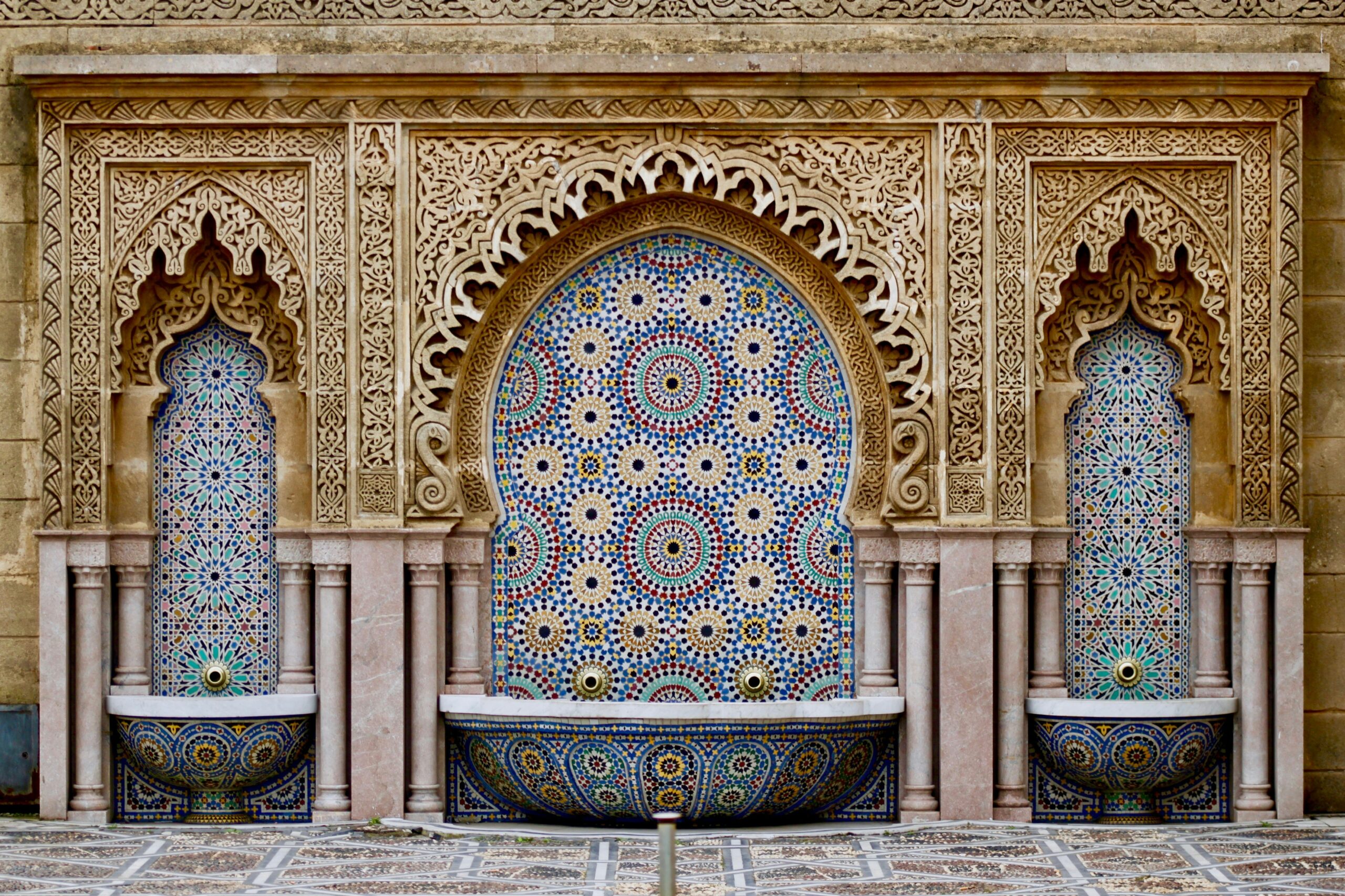
Fes, one of Morocco’s oldest and most culturally significant cities, is often considered the spiritual and intellectual heart of the country. Founded in the 9th century, it is home to one of the world’s oldest universities, Al Quaraouiyine, which has been a center of learning for over a thousand years. The city is famous for its well-preserved medieval architecture, with narrow, winding streets that lead to beautiful palaces, mosques, and madrasas. The UNESCO-listed Fes el-Bali, the old medina, is a maze of over 9,000 alleys where visitors can experience the charm of traditional Moroccan life.
Fes is known for its rich craftsmanship, particularly in leatherwork, pottery, and textiles. The famous Chouara Tannery, one of the oldest in the world, is a must-see, where visitors can watch the process of leather being dyed in vibrant colors. The city’s architectural landmarks, like the Bou Inania Madrasa and the stunning Al-Attarine Madrasa, reflect its rich Islamic heritage and intricate design.
Fes is also a city of spirituality, with several important mosques and shrines scattered throughout the city. The city’s cuisine is another highlight, offering delicious traditional dishes like pastilla, couscous, and mechoui. Fes is a city where ancient traditions meet modern life, providing an immersive experience for those interested in history, culture, and art. With its deep intellectual history, intricate craftsmanship, and vibrant atmosphere, Fes remains a captivating destination for travelers.
FEZ The Intellectual Center
Explore The Desert
The Moroccan desert, part of the vast Sahara, offers a mesmerizing landscape of sweeping sand dunes, rocky plateaus, and oases tucked between the arid expanses. Known for its dramatic beauty, it stretches across the southeastern part of the country, with iconic locations like Merzouga -Erg Chebbi dunes- and Chigaga desert. As the sun rises and sets, the desert transforms, casting vibrant colors across the horizon, while at night, the stars seem closer than ever in the crystal-clear sky. Life in the Moroccan desert is both sparse and resilient—nomadic Berber tribes, camels, and desert flora have adapted to the harsh conditions. Visitors often experience the magic of the desert on camel treks, discovering its quiet solitude, ancient kasbahs.
Diverse , Food Hospitality Traditional
Moroccan culture is a vibrant mix of diverse influences, blending Arab, Berber, African, and European traditions. It is known for its deep-rooted hospitality, where guests are warmly welcomed with tea and food. Despite modern influences, the culture remains traditional, with elements like the djellaba, riads, and colorful markets showcasing its rich heritage.
